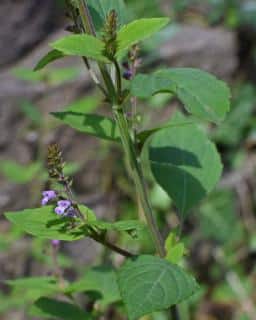

Beardtongue is a beautiful perennial that blooms in summer with very ornamental flowers. Perfect for decorating gardens and terraces!
Name – Penstemon
Family – Scrophulariaceae
Type – perennial
Height – 1 to 4 feet (30 to 120 cm) depending on the variety
Exposure – full sun, part sun
Soil – rather rich and well drained
Flowering – May to October
If you purchased your plants in nursery pots, it is best to plant them in the ground in spring, spacing them 12 inches (30 cm) apart and adding “flower plant” soil mix to the garden soil.
Beardtongues are actually well suited to growing in pots for balconies and terraces.
Has your beardtongue patch grown too thick?
Sowing beardtongue is difficult and efforts aren’t always crowned with success.
However, you can also simply let a few flowers go to seed, and some of them will sprout naturally in the spring.
Beardtongue cuttings are prepared in summer and usually lead to rather good results.

In winter, no need to remove beardtongue leaves: they protect the plant from the cold. What is best is to cover the plant with a thick layer of dead leaves to protect it from freezing.
Beardtongue is hardy to temperatures as low as 23°F (-5°C) and even 5°F (-15°C), depending on the variety.
Native to America, beardtongue is a beautiful perennial that bears long floral scapes with cute bell-shaped flowers. Often compared to foxglove, they are sometimes mistaken one for the other.
Also called penstemon, there are over 250 varieties of beardtongue with as many colors, shapes and sizes.
Dominant colors are red, violet and yellow, and Penstemon barbatus and Penstemon heterophyllus are most common. Many hybrids have been developed to this day.
They are easy to grow, require little care, and the result is guaranteed to make an impact with their spectacular flowers.
You can also cut a couple beardtongue flower stems and place them in a vase, they keep for a long time!
I just bought 3 beardtongue plants from Home Depot, planted them in my yard. They are getting water but the leaves are wilting and drying out. We live in the Pacific Northwest but on the east side of the Cascades where it is more desert-like.
Don’t know what I did wrong but I do have a brown thumb and nothing ever grows for me, so my reputation is again intact! I removed the plants from the buckets, broke the root ball by separating the roots from the compacted soil. Planted them in the ground, watered with Miracle Grow. They get watered 3 to 4 times a week with the yard watering, but each has its individual spout and I checked to be sure that station is working.
That was 2 weeks ago, and now they are wilting and looking sad. Any suggestions?
Hmm, always a bit tough with plants purchased in generic stores: they’re not always perfectly suited to the place they’re sold in. Usually large franchises buy bulk and some products end up at the other end of the country.
I’d say your plants are showing signs of transplant shock, meaning they left the perfectly fine-tuned growing environment of their nursery to face off reality in your garden. It doesn’t have anything to do with you being a brown or a green thumb, don’t worry!
What you can do is add a layer of mulch around your plants: this will lock moisture in, whereas without mulch, soil might dry out quickly due to dry air and wind, even right after watering. Try watering in the evening instead of during the day.
You did good to break the clump up, it prevents roots from constricting each other out, but a downside of this in the short run is that damages roots, so the plant has to recover from that on top of the environmental change.
If you further suspect that the plant is drying out, one thing you can do for a few weeks or throughout the summer is to cover the plant with a thin shade veil (there are various grades available in stores, but a thin curtain works fine). This will help the plant cope against too much light and heat.
I would like to transplant my Prairie Dusk and Dark Tower Beardtongue. When is the best time to do this?
Hello Judy! Wow, those are real beauties! Spring is the best season to transplant beardtongues, once the weather has stopped freezing. Transplanting in fall or autumn is ok, too, just try to find the right time slot before it freezes but after giving leaves time to send nutrients down to the roots for winter storage. Take a look at our page on how to avoid transplant shock in perennials for extra guidance. Beardtongues are quite strong so you shouldn’t have any issues.
Do I just strip the dead flowers from the stem, not pruning the stem itself?
Beardtongues bloom from bottom to top: remove spent flowers from the lower part of the stem to send more sap to new buds forming higher up. When the whole stem has lost its flowers, cut it off near the bottom, and new flower stems will grow for you, Sylvia!
Cut it off at the bottom of the stem (ground level) or at the bottom of the flower section?
As near as ground level as you can without damaging leaves and such. From the plant’s point of view it’s best to simply let scape be, as when it dries out in fall nutrients are pulled back into the root system. But for this ornamental, and since it’s just a single flower stem, it’s ok to cut it back for the clump to still look nice.